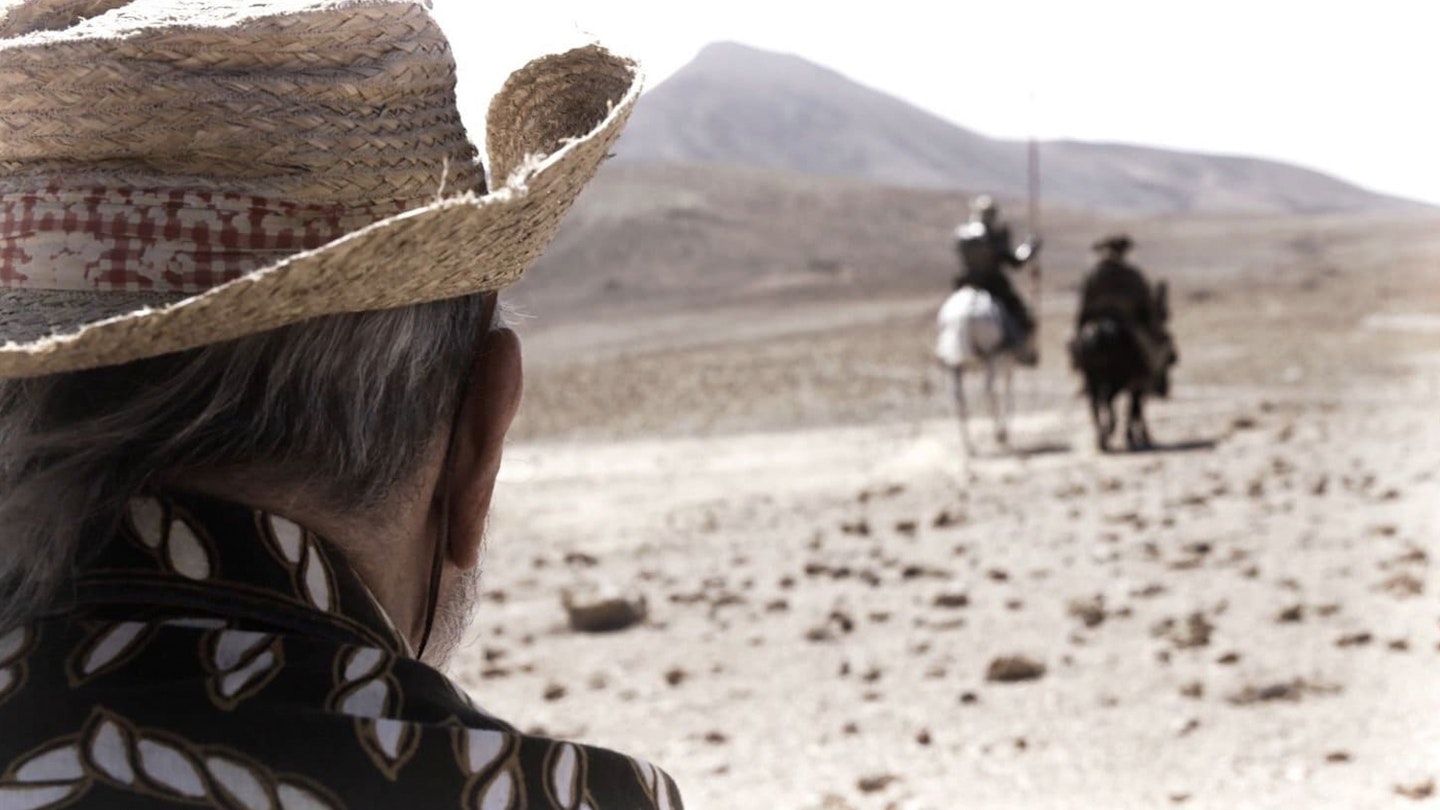A recurring image in He Dreams Of Giants depicts a forlorn Terry Gilliam rubbing his temples in a huge, unforgiving close-up as a howling wind rattles around him. It’s no wonder. The ex-Python’s attempts to bring The Man Who Killed Don Quixote to the screen started in 1989 and became beset by catastrophe after catastrophe, a triple whammy of flash floods, ill actors and financial difficulties. Keith Fulton and Louis Pepe’s film, a follow-up to 2002’s Lost In La Mancha, which superbly detailed Gilliam’s previous attempts to make his pet project, follows Gilliam’s last hurrah to bring the troubled story to life. It’s an interesting glimpse into the effort and compromise needed to keep a dream alive, but lacks the punch of the previous making-of.

Part of the reason that He Dreams Of Giants doesn’t match up is that it leans too heavily on Lost In La Mancha to bolster the drama. The making of the new The Man Who Killed Don Quixote often feels muscled out by archival interviews detailing the project’s previous failures, and clips from much better films — Time Bandits, Brazil and The Adventures Of Baron Munchausen — underscore Gilliam’s ambitions but feel like bloat. The other problem for the documentarians is that, when it finally goes in front of the camera, The Man Who Killed Don Quixote was a relatively painless experience. There is fantastic footage capturing Gilliam’s frustration around how slowly the first day of filming is going (“We are fucking ourselves right now!”) and worries about Jonathan Pryce’s back pains, but for the most part it’s a trouble-free shoot. There is even joy: watching Pryce, Gilliam and Adam Driver have fun at a read-through is a delight.
It helps that Gilliam is a terrific talker, a man who can find the words for his pain.
More than a BTS expose, Fulton and Pepe’s film works best as a portrait of an artist in angst (there’s a throwback to Fellini’s director-with-ennui masterpiece 8 1/2), of a filmmaker trying to realise his biggest ambitions versus rising costs and limited funds (the budget of this Don Quixote is half of the previous Johnny Depp version). It becomes clear The Man Who Killed Don Quixote’s biggest obstacle seems to be Gilliam himself. The film reveals a director desperate to rid himself of this 20-year demon (“I want this fucker out of my life”) yet afraid of the reaction when he does. It helps that Gilliam is a terrific talker, a man who can find the words for his pain. As the end of filming approaches, he candidly admits, “We might actually finish the film. I’m terrified. When it’s done there’s a huge void waiting for me. And that scares the shit out of me.”
The film gets a late-in-the-day crisis as Gilliam is rushed to hospital with stomach issues, only to be back on set refusing to accept the last day of principal photography is the end. He Dreams Of Giants concludes with Gilliam at the Cannes Film Festival where the film receives a 20-minute standing ovation, but doesn’t go on to detail its mixed reception and chequered release. Throughout the doc, Gilliam constantly questions, “Is the film better left in my head?”, and without any retrospective insight from the filmmaker, the jury is still out.
